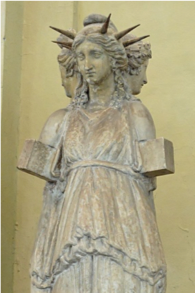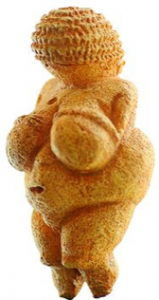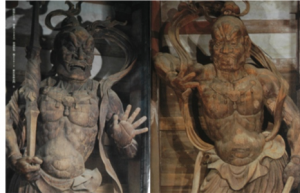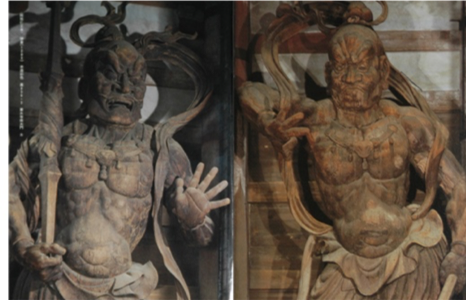Regeneration among the Six Processes
The word ‘regeneration’ implies a re-engendering, a re-creation. It implies that something was first created naturally, and is now to be re-created a second time by will, intention and purpose. It implies a second birth.
— Rodney Collin.
The Law of Three refers to the concept that three forces–an active, passive and intermediary force–are needed to create any physical or psychological phenomena.

Though one can find traces of this idea in esoteric myths, only conscious schools teach it directly. To detect and understand all three forces requires self-awareness. However, since man spends his life in a state of sleep, without self-awareness, he is ‘third-force blind.’
Generally we are not aware of the third force. This is connected with the state of our being, the state of our consciousness. — P. D. Ouspensky
The I Ching – Book of Changes
The I Ching is an ancient Chinese text, usually considered to be a fortune-telling manual. It deals with two of the three cosmic forces—yang, the active force, and yin, the passive force. Because it does not describe the more hidden, esoteric, third force, the I Ching can appeal to all readers. Its exoteric quality leaves it open to numerous interpretations not related to enlightenment. Therefore, various books on the I Ching explain it from a different point of view.
The Esoteric Meaning of Yin and Yang
Yet looking at the Chinese ideograms, one understands that the most important meanings of yin and yang are spiritual darkness and spiritual illumination, the absence and presence of self-awareness.
The right part of the character for yin 陰 — 侌 shows 今 above, meaning ‘now’, while 云 below, means ‘cloud.’ It symbolizes that the light of the ‘original spirit’— self-awareness—is obscured by thoughts going around in one’s mind. The right part of the character for yang 陽—昜 shows 日, ‘the sun’ above, and 勿 below, referring to ‘sunrays coming down.’ This symbolizes that self-awareness, one’s true nature, is not obstructed.
In the path of revolution, the ‘sun’ of the self is truth. The sun is an image of illumination. — Liu Yiming, The Taoist I Ching, Hexagram 49 – Revolution
When the original spirit is present, illumination is at its fullest. — Liu Yiming, The Taoist I Ching, Hexagram #4 – Darkness
Reaching ‘Pure Yang”
The I Ching is actually a detailed manual on enlightenment. Its aim is to reach pure yang, ‘illumination at its fullest.’ To reach pure yang, we must balance yin and yang. Here, yin means flexibility and yang refers to strength.
The yang energy in people is firm; firmness without restraint turns into aggressiveness, like fire rising. Yin energy is flexible; flexibility without support becomes too weak, like water descending. — Liu Yiming, Awakening the Tao
When one is able to be both firm and flexible, ‘water’ and ‘fire’ are in balance. However, without taking the third force into consideration, we may interpret firmness and flexibility in ways that have nothing to do with enlightenment.
The Yellow Woman and True Intent
In relation to creating full illumination, awakening the original spirit, the I Ching speaks about the “yellow woman.”
Spiritual alchemy, the science of the gold elixir, uses the “yellow woman” as the go-between for yin and yang. The “yellow woman” is true intent; associated with earth, which is called the yellow woman. — Liu Yiming, The Taoist I Ching, Hexagram #61 – Faithfulness in the Center

True intent refers to an impulse in the heart to return to self-awareness. The Chinese ideograph for intent —意— shows heart — 心 — at the bottom, with the sun —日— in the middle and rising up—立 — at the top. This shows that the original meaning of this character is the impulse of self-awareness rising up in the heart.
Conversely, errant intent is an impulse in the heart when the heart inclines to things of the world. When errant intent is the third force, what occupies one is not related to enlightenment, and keeps one in a state of sleep.
The Good Earth of the Heart
In other esoteric traditions, the “yellow woman” is the Mother Goddess or Earth Mother. She embodies fertility and the bounty of the Earth. (Earth is an anagram for heart.) The heart is the good earth, which contains the impulse or seed of self-awareness. After reaching self-awareness, one wants the seed to grow; one wants to prolong the state.

This is the crux of the matter, and requires firmness and flexibility. Firmness means possessing the will to not allow any thoughts to interrupt self-awareness. Buddhist statues often portray this firm yang energy.
Thus, flexibility refers to the ability to sustain self-awareness. In Taoist alchemy, the crucible and the furnace symbolize firmness and flexibility.
Stabilize the will with firmness; do the work with flexibility.
Making the will firm and strong is setting up the crucible;
Gradually progressing in the work is setting up the furnace.
— Liu Yiming, The inner Teachings of Taoism
The Third Force for Awakening
True intent in the heart is the third force–the catalyst–to being successful. Otherwise, if true intent in the heart is not firm enough, errant intent quickly interrupts self-awareness.
Therefore it requires a sustained effort to regenerate or recreate the original spirit. Indeed, the heart in which yin and yang unite is “the heart of heaven and earth.”
The heart of heaven and earth is the basis of ongoing growth; those who attain this heart become sages, Buddhas, immortals. Those who lose this heart become animals, ghosts, demons. Whether one has this heart or lacks this heart is all a matter of whether yin and yang are separate or united. — Liu Yiming, Awakening the Tao

The yellow woman is the earth mother in the center, called the yellow woman because it can harmonize yin and yang.– Liu Yiming
Hexagram #1, The Creative, is the hexagram of pure yang. It has six yang lines. It stands for the re-creation or regeneration of the original spirit.
The holy man who understands the mysteries of creation inherent in end and beginning, becomes superior to the limitations of the transitory. — Commentary on hexagram #1, The Creative䷀,
I Ching, Wilhelm/Baynes edition
Walther Sell is the author of a website on Oriental esoteric teachings and the Fourth Way. For more, see Inner Journey to the West and other articles by Walther for FourthWayToday.org.
